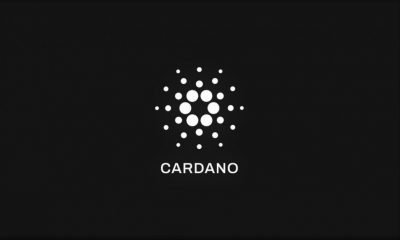Bitcoin Investor
Bitcoin Vs. Cardano – What’s the Difference?

Securities.io maintains rigorous editorial standards and may receive compensation from reviewed links. We are not a registered investment adviser and this is not investment advice. Please view our affiliate disclosure.
Table Of Contents
It's common for traders to compare Bitcoin and Cardano as both projects have a strong reputation and have been in operation for years. These networks share some features in common, but their overall functionality, options, and purpose are different. Learning these differences is a crucial first step to understanding which project best fits your trading strategy.
What is Bitcoin?
Bitcoin is the world's first successful cryptocurrency. This coin changed the world forever when Satoshi Nakamoto, the project's anonymous founder posted its whitepaper in 2008. The following year, Bitcoin was released as an open-source project to the world. The token was unique to its predecessors in many ways.
For one, Bitcoin was the first decentralized currency to operate properly. It conquered the double-spend issue which had plagued all previous crypto attempts. The double send issue refers to how early digital currencies could be sent, and then another transaction could be sent before the first one cleared. Nakamoto changed the game when he added a timestamp to transactions which made this hack impossible.

Source – Twitter @Bitcoin
There is a lot of speculation as to why Bitcoin was created. However, Nakamoto never clearly expresses any direct reasoning only technical goals such as making the network “a digital peer-to-peer electronic cash system.” However, he did place some information in the genesis block that refers to another bank bailout.
What is Cardano?
Cardano was created in 2015 by Charles Hoskinson – a former Ethereum co-founder. Charles Hoskinson wanted to build a programmable blockchain network that was more secure and faster than competitors. The main goal of the project was to create a decentralized network that leveraged the scientific method and academic processes during creation.
Today, Cardano still has a strong integration into academic systems. Interestingly, the network is sprinkled with clues to its overall academic goals. For example, the name Cardano comes from the famous Renaissance mathematician, Gerolamo Cardano,
What Problems Was Bitcoin Built to Alleviate?
Bitcoin helped to usher in a new age of decentralized finance. The token has enabled millions of people to escape the skewed financial system. The decentralized nature of the token and its unique characteristics have made it an excellent store of value and are a far more transparent option compared to fiat currencies.
Bitcoin eliminated the need for a central bank and made it possible for the community to conduct secure transactions. The coin is much cheaper to send internationally and can be transmitted in a permissionless manner thanks to the technical characteristics of PoW blockchain networks. Users can send Bitcoin anywhere in the world without worrying about censorship. Additionally, anyone can hold and save Bitcoin. The network is set up to support non-custodial wallets, which means that you are the only one who can ever access your crypto.
What Problems Was Cardano Built to Alleviate?
Cardano was built with a more forward-looking stance than Bitcoin as it had the advantage of entering the market long after. When Cardano entered the market, the crypto sector had already evolved considerably. As a third-generation cryptocurrency, Cardano supports the creation of blockchain assets, networks, and Dapps.
Cardano was built with sustainability in mind. The network uses just a fraction of the energy required to keep Bitcoin valid. This environmentally friendly approach was part of the team’s long-term strategy to make Cardano the ideal programmable blockchain infrastructure provider for the academic sector.
Cardano also improved transaction throughput when compared to Bitcoin or Ethereum. Scalability concerns have long been an issue in the blockchain sector. Cardano was designed to provide more scalability, reduce network congestion, and provide a smart alternative to other programmable networks a the time such as Ethereum.
How Does Bitcoin Work?
Bitcoin uses blockchain technology to remain valid. The system is designed to place blocks of transactions in order based on their timestamps. The network eliminates centralized groups like banks and replaces these groups with network nodes.
The Bitcoin network nodes go by the name miners. In the Bitcoin consensus mechanism, these groups compete against each other to be the first to answer a complex mathematical equation. The first node to complete the equitation qualifies for the reward.
This reward is the only time that new Bitcoin enters the market. This strategy gives the token a predictive issuance. When you couple this issuance schedule with the limited supply of 21M tokens, it’s easy to see why Bitcoin has gained value due to scarcity since its launch.
BTC
Bitcoin is the cryptocurrency for the Bitcoin network. This cryptocurrency can be sent internationally and is censorship resistant. Notably, as the world’s first cryptocurrency, the Bitcoin network is limited in its functionality. However, recent add-ons like the off-chain protocol, the Lightning Network, have helped the coin remain competitive in the face of newer more capable options. In addition, Bitcoin is one of the very few digital assets to have been granted some level of regulatory clarity.
How Does Cardano Work?
Cardano leverages a Proof-of-Stake consensus mechanism. This system varies from the PoW miners needed to keep Bitcoin valid. In the Cardano ecosystem, users can stake their tokens to secure returns. Staking is the process of locking your tokens into a smart contract for a predetermined time.

Source: Twitter @Cardano
Staking networks are faster, more efficient, and provide better opportunities to their users. The main reason why is that they don’t require mining rigs or technical skills to join and secure rewards. Another major reason why Cardano is so popular is that the network has a seamless upgrade process. There is no need to conduct hard forks to upgrade the network which keeps the system nodes in sync.
ADA
Even Cardano’s token has an academic twist. The token ADA is named after the 19th-century mathematician Ada Lovelace. Lovelace is generally regarded as the first computer programmer. ADA can be used to pay fees, access features, and send value internationally.
How to Buy Bitcoin (BTC) and Cardano (ADA)
Currently, Bitcoin (BTC) and Cardano (ADA) are each available for purchase on the following exchanges:
Uphold – This is one of the top exchanges for United States residents that offers a wide range of cryptocurrencies. Germany & Netherlands are prohibited.
Uphold Disclaimer: Terms Apply. Cryptoassets are highly volatile. Your capital is at risk. Don’t invest unless you’re prepared to lose all the money you invest. This is a high-risk investment, and you should not expect to be protected if something goes wrong..
Kraken – Founded in 2011, Kraken is one of the most trusted names in the industry with over 9,000,000 users, and over $207 billion in quarterly trading volume.
The Kraken exchange offers trading access to over 190 countries including Australia, Canada, Europe, and is a top exchange for USA residents. (Excluding New York & Washington state).
Bitcoin vs. Cardano – Two Great Options in the Market
When you look at these projects separately, you can see that they both have long-term potential and strong followings. When compared, Cardano has Bitcoin beat in terms of sustainability and efficiency. However, Bitcoin still commands more value and has a much larger following due to its scarcity, reliability, network strength, and increasing functionality. The main thing to understand is that both of these projects have the potential to stand the test of time. You can learn more about Bitcoin here and Cardano here.
David Hamilton is a full-time journalist and a long-time bitcoinist. He specializes in writing articles on the blockchain. His articles have been published in multiple bitcoin publications including Bitcoinlightning.com
You may like


Bitcoin Fundamentals Will Allow it to Endure Near Any Crisis


4 Ingenious Uses for Bitcoin (BTC) Mining


5 Best Non-Custodial Software Wallets (July 2025)


5 Best Open-Source Crypto Wallets (July 2025)


Investing In Cardano (ADA) – Everything You Need to Know


Cardano Vs. Avalanche – What’s the Difference?